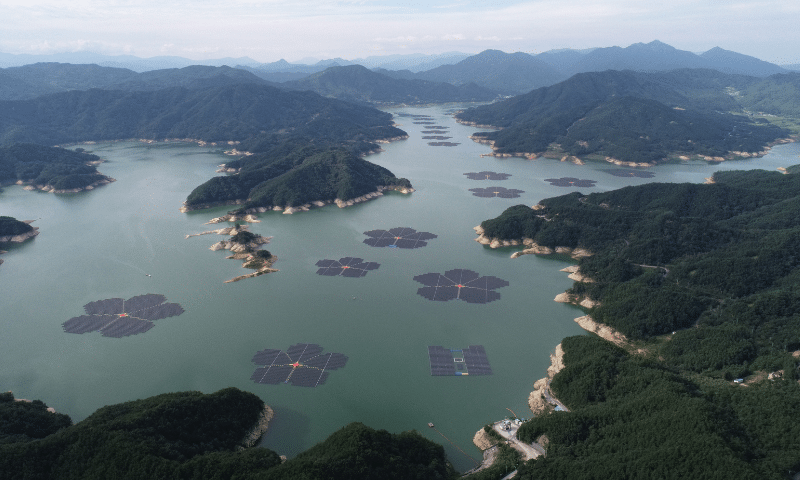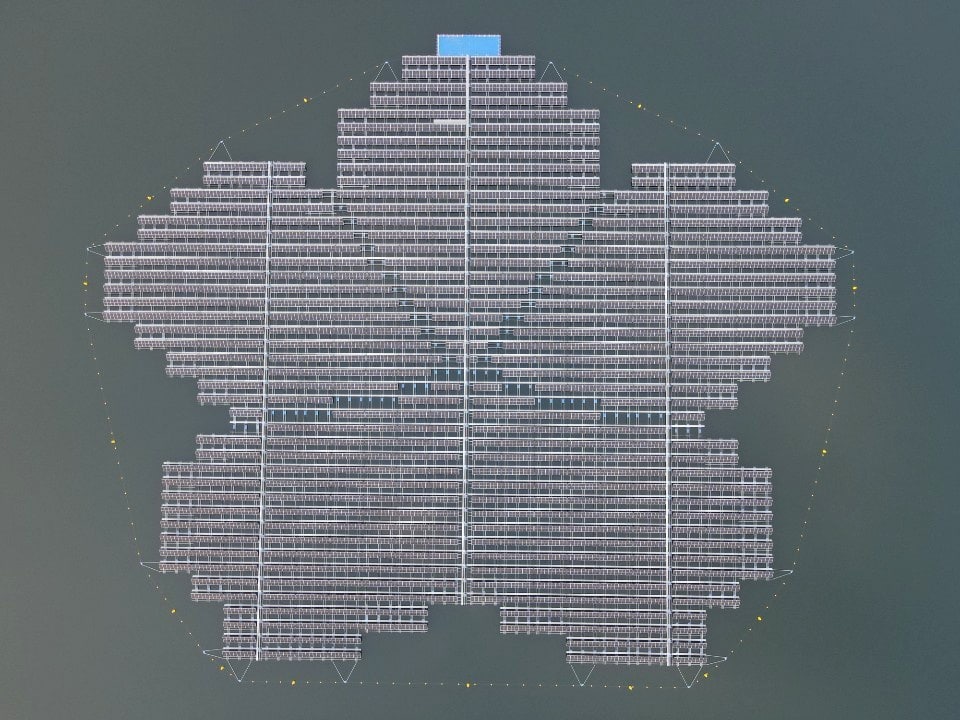
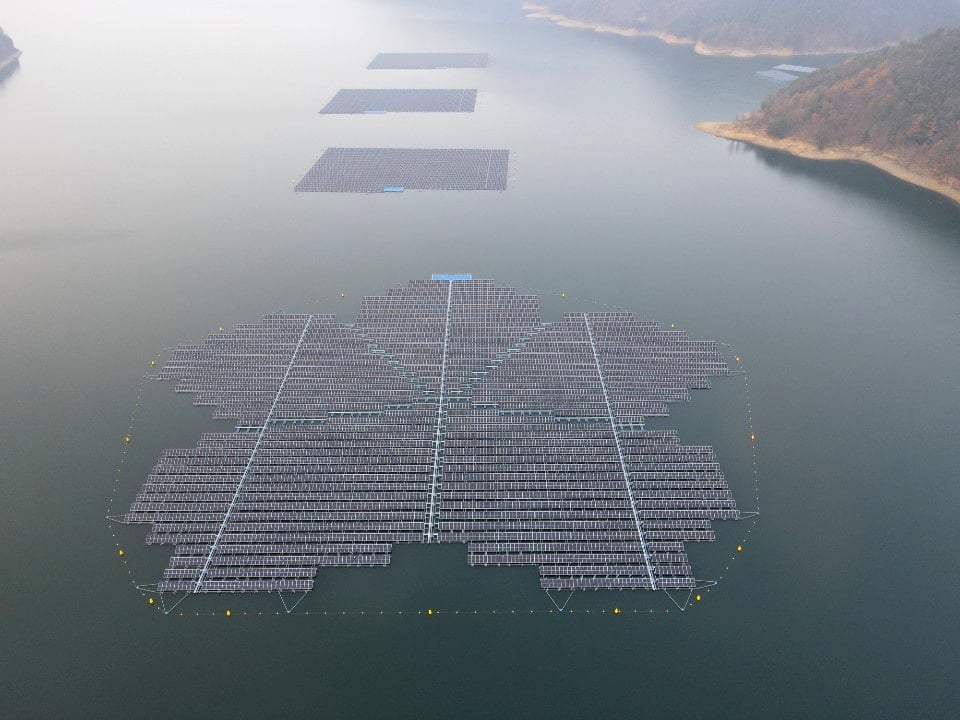
Image: Scotra – A 41 Megawatt floating photovoltaic (FPV) atop a reservoir at the Hapcheon dam in South Gyeongsang province of South Korea has been built by floating PV specialist Scotra of South Korea.
Renewable energy has taken huge strides in recent years, with solar power at the forefront of this shift. As the world seeks to reduce its carbon footprint, solar panels have become a popular option for harnessing the power of the sun. However, there are some challenges to installing large-scale solar farms on land, including limited space, high costs, and land use concerns.
The use of floating solar photovoltaics (PV) or known as floating solar panels, floating photovoltaic (FPV) or floatovoltaics on global reservoirs could generate significant energy production while also saving water, according to a new study published in the journal Nature Sustainability.
Only global reservoirs greater than 0.01 km2 and less than 30 km2 in size are taken into account in the study. The Global Reservoir and Dam (GRanD), the Georeferenced Global Dam and Reservoir (GeoDAR), and OpenStreetMap (OSM) were utilised by academics to screen the qualifying reservoirs. With a total size of 554,111 km2, there are 114,555 reservoirs worldwide that match the criteria. 2,561 reservoirs currently have grid infrastructure and hydraulic power generation in place.
Energy Matters has been a leader in the renewable energy industry since 2005. We can connect you with our trusted local solar installers in Melbourne, who will provide your home and business solar energy system.
Contact us today for up to 3 FREE quotations from commercial solar firms we’ve pre-qualified and vetted for their track record of delivering the best business solar systems in Australia. Get your free quotes today!
The study, titled “Energy production and water savings from floating solar photovoltaics on global reservoirs,” analysed the potential of floating solar PV on over 24,000 man-made reservoirs around the world. The researchers found that if just 10% of these reservoirs were equipped with floating solar PV, it could generate around 4,500 terawatt hours (TWh) of electricity per year, more than the current global electricity demand.
The concept of floating solar panels is not new. The first such installation was built in 2007 in Japan. Since then, technology has gained popularity, with many countries around the world embracing this approach. China, in particular, has taken the lead in this field, with more than 40 floating solar projects currently in operation.
So, what makes floating solar panels so appealing?
For one, they don’t require any land, which can be a significant advantage in areas where space is limited or expensive. In addition, the water underneath the panels helps to cool them, which can increase their efficiency and lifespan.
Moreover, water bodies often have higher sun exposure than land areas, making them ideal for solar power generation.
Another significant advantage of floating solar panels is that they can be installed on existing reservoirs and other bodies of water, without requiring any new land to be cleared. This can help to reduce the environmental impact of solar panel installations, which has been a concern for many people.
One of the most promising applications of floating solar panels is in the field of water management. Many countries face water scarcity issues, which can be exacerbated by the energy needed to pump and transport water. Installing solar panels on reservoirs can generate clean energy while reducing water evaporation and algae growth. This can help to conserve water resources, reduce energy costs, and protect ecosystems.
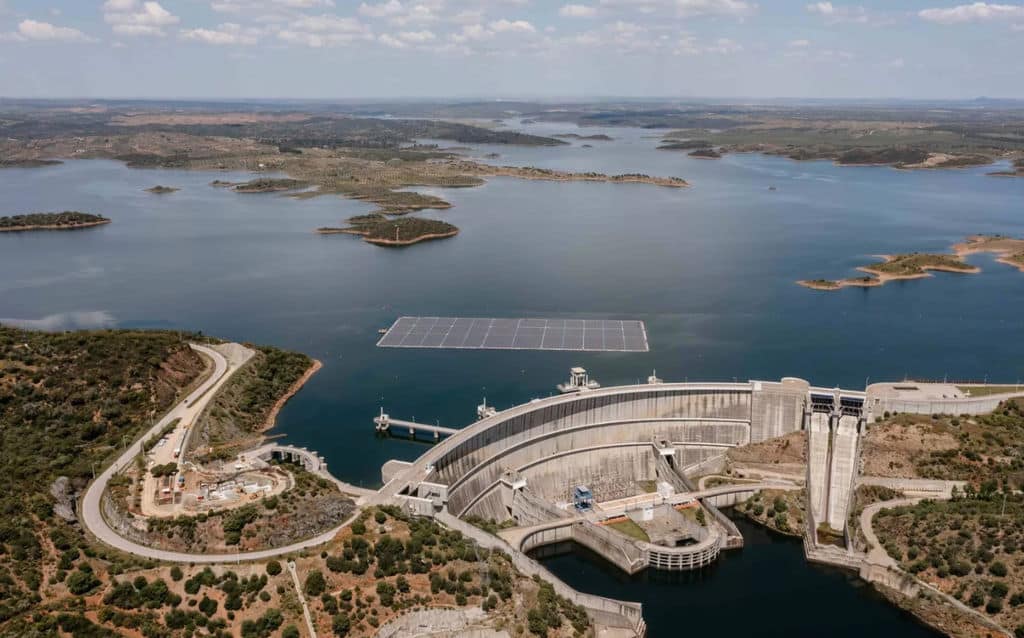 Image&Source: EDP – Portugal’s Alqueva a 5MW floating solar PV
Image&Source: EDP – Portugal’s Alqueva a 5MW floating solar PV
Benefits found in floating solar PV
In addition to the significant energy production potential, the study also found that floating solar PV could help to save water. Installing floating solar panels on reservoirs can reduce water evaporation, which can be a significant issue in many regions worldwide. The study estimates that floating solar photovoltaic (PV) on global reservoirs could save up to 42 billion cubic meters of water per year, equivalent to the annual water consumption of around 16 million people.
The study also found that floating solar PV on reservoirs could have additional benefits, such as reducing land use requirements and improving water quality. By reducing land use requirements, floating solar PV can help to preserve natural habitats and ecosystems while improving water quality can help to protect aquatic life and support local communities that rely on fishing and other water-related activities.
Check out our page for reasons to invest in industrial and commercial solar panels in 2023.
The top countries for floating solar potential
According to the latest study, the US would particularly benefit from large-scale floatovoltaics since it has so many reservoirs. The nation could produce 1,900 terawatt hours of energy—roughly a sixth of the possible global total—while saving 5.5 trillion gallons of water annually if floating panels were used to cover 30% of its reservoir area.
Brazil and India could produce 865 and 766 terawatt hours annually, respectively, while China could generate 1,100 terawatt hours yearly. Egypt could install floatovoltaics across 100 square miles, producing 66 terawatt hours of electricity and saving more than 200 billion gallons of water every year.
Challenges of floating solar PV
Despite the many potential benefits of floating solar PV on reservoirs, the study notes that several challenges need to be addressed. One of the main challenges is the cost of installation, which can be higher than traditional ground-mounted solar systems. However, as the technology continues to develop and become more widely adopted, the cost is likely to decrease.
Another challenge is the potential impact of floating solar PV on the surrounding ecosystem, particularly on water quality and aquatic life. However, the study suggests that these impacts can be mitigated through careful planning and design.
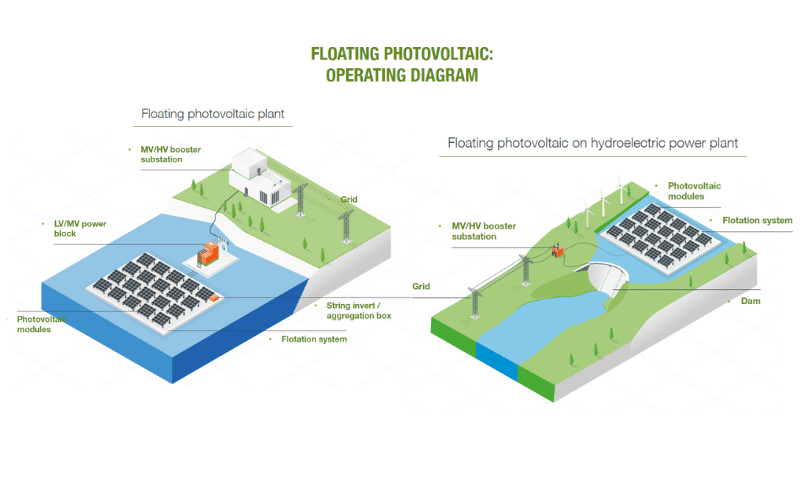
Image: IBERDROLA
Australia's largest floating solar panel
The small city of Warrnambool in southwest Victoria is to launch the biggest floating solar array in Australia.
As part of a $1.4 million pontoon project unveiled in September of last year by water body Wannon Water, more than 1,200 double-sided solar panels will be permanently moored in the middle of the Brierly Basin.
Floating solar PV on reservoirs has an important role
The study provides compelling evidence of the potential of floating solar PV on reservoirs to generate significant energy production while saving water and providing additional environmental benefits. As the world continues to transition towards a more sustainable and renewable energy future, floating solar PV on reservoirs could play an important role in meeting the growing demand for electricity while also addressing some of the most pressing environmental challenges of our time.
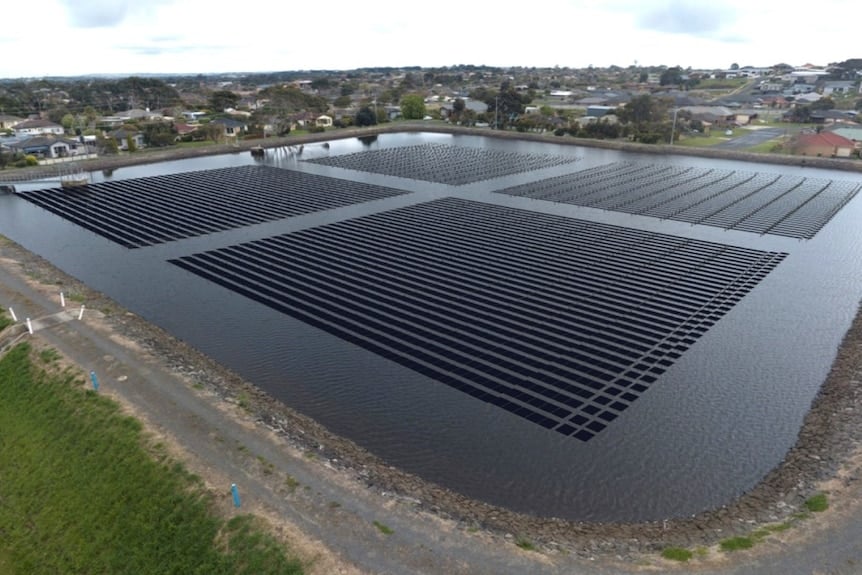
Image: Wannon Water – Raw water is stored in the Brierly Basin in Warrnambool, which receives water from nearby rooftops and the Otways. An artist illustrates the floating solar system in Brierly Basin.
Going solar
Are you thinking of buying solar panels? Still, trying to figure out where to start? Don’t worry, we have you covered! Energy Matters can help you.
Find out how you could save on the cost of solar panels and invest in renewable energy by contacting and letting us discuss information and resources to help install solar panels. Use our free solar quote system to get up to 3 free solar quotes from our network of trusted, local installers. Complete our quick quiz and begin your solar journey today!
Energy Matters will feature stunning homes with the latest solar technology every Saturday at 4.30 pm on Open Homes Australia on the 9Life channel. Be sure to watch this show, you don’t want to miss it!












